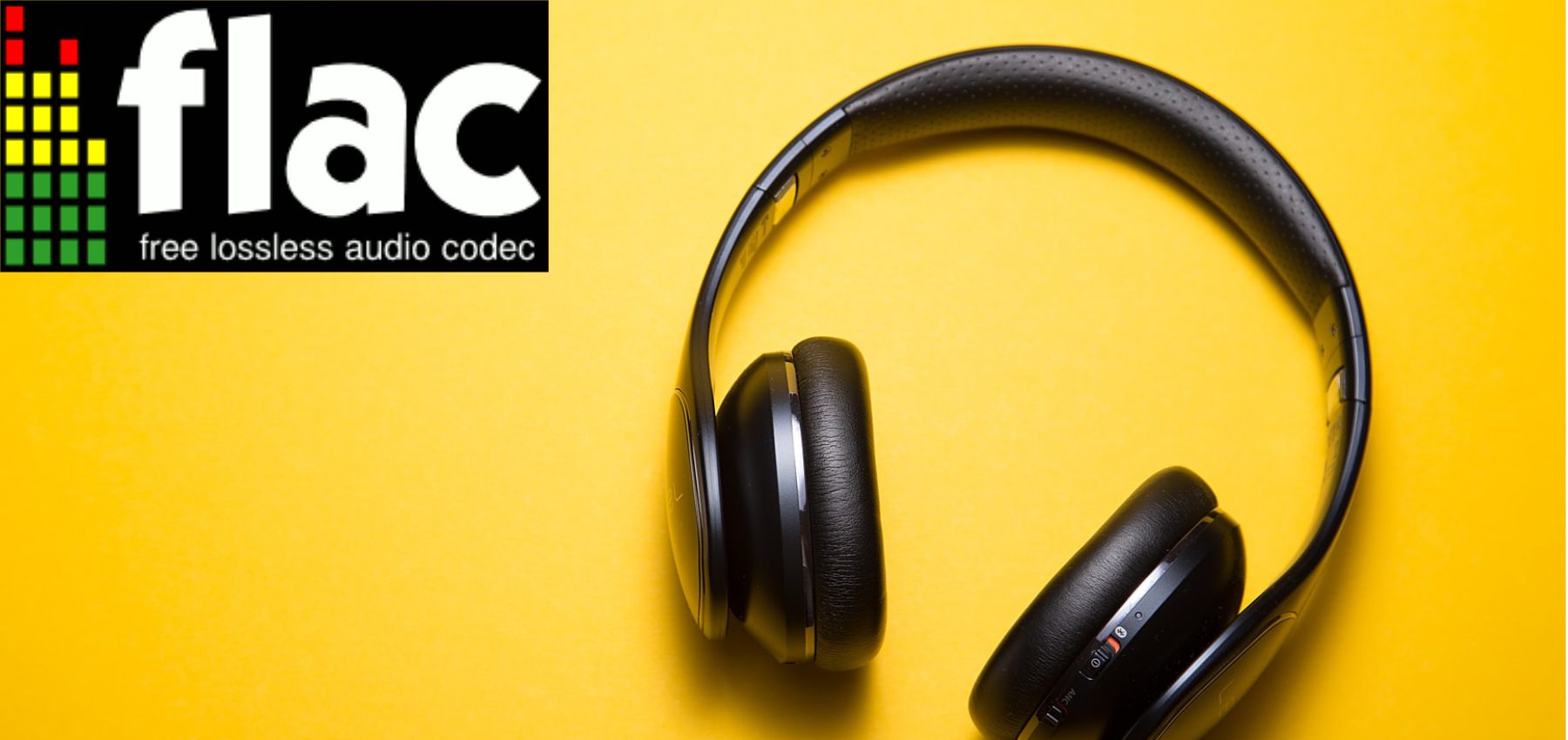FTC disclaimer: This post contains affiliate links and I will be compensated if you make a purchase after clicking on my link.
FLAC files are becoming increasingly popular among music lovers and audiophiles. But what exactly is a FLAC file? In simple terms, it is a lossless audio codec that compresses audio files without sacrificing quality.
Unlike other audio formats like MP3, which uses lossy compression, FLAC files maintain the original sound quality of the recording. This makes it a great option for those who want to listen to high-quality music without having to sacrifice storage space.
In this article, we will dive deeper into what a FLAC file is, how it works, and its advantages over other audio formats. Whether you’re a music enthusiast or just curious about audio codecs, this article will provide you with a better understanding of FLAC files.
What is a FLAC File?
FLAC, which stands for Free Lossless Audio Codec, is a popular audio file format that uses lossless compression to maintain high-quality sound while reducing file size.
It was developed to address the limitations of other audio file formats, which can compress sound by sacrificing some audio data, resulting in reduced audio quality.
On the other hand, FLAC files compress audio data without any loss in quality, making it an excellent choice for those who want to enjoy high-quality music while also managing their drive space.
In this article, we will explore in more detail what a FLAC file is, how it works, and why it is a format of choice for many audio enthusiasts.
Advantages of FLAC file format
FLAC stands for Free Lossless Audio Codec, a file format used for digital audio compression. The format’s main advantage is compressing audio files without sacrificing quality. Unlike other audio file types like MP3, which use lossy compression, FLAC files maintain the original recording’s full fidelity. Here are some of FLAC’s main benefits:
1. Lossless Compression: FLAC is a lossless compression format with the ability to compress audio files without affecting the quality of the recording.
2. High-Resolution Audio: FLAC supports high-resolution audio playback, making it an excellent choice for audiophiles who want to experience high-quality music.
3. Open-Source Adaptability: Being an open-source format, FLAC is adaptable, and users can personalize the parameters of their audio files based on their needs.
4. Compatibility: FLAC files are compatible with various operating systems, including Windows, Mac, and Linux, and can be played on multiple media players like VLC Media Player and Foobar2000.
FLAC is an excellent file format for high-quality audio files, which can be compressed without losing any of the fidelity of the original recording.
Its lossless compression capability is unmatched by many other audio file types, making it ideal for audiophiles who want high-quality sound.
Additionally, its open-source adaptability and compatibility with many media players and operating systems make it a preferred choice for many.
History of FLAC file format
FLAC, short for Free Lossless Audio Codec, was first developed by Josh Coalson in 2000. It was released on July 20, 2001, as version 0.5. Coalson wanted to create a lossless compression format that could reduce the size of audio files without sacrificing quality, unlike other formats such as MP3.
The FLAC format quickly gained popularity among music enthusiasts and audiophiles due to its high-quality audio playback.
In 2003, FLAC was incorporated into Xiph.Org’s git repository, making it an official part of the Xiph.Org Foundation. This move resulted in FLAC’s continued development and ensured compatibility with other Xiph.Org codecs, including Vorbis and Theora.
Today, FLAC continues to be supported and improved by the Xiph.Org community, with developers continually working to optimize the format for high-quality audio playback.
The incorporation into Xiph.Org solidified FLAC’s place as one of the top lossless audio formats available, and it remains a popular choice for professionals and music enthusiasts alike.
How to Play a FLAC File?
FLAC, or Free Lossless Audio Codec, is an audio file format that offers high-quality sound without compromising the size of the original recording. To play FLAC files on different devices and operating systems, you need compatible players like FLAC Player for iOS devices and Rocket Music Player for Android.
For Windows users, Roon and Media Monkey are the recommended media players. Meanwhile, Fluke or Songbird is suitable for playing FLAC files on Mac. However, if you’re looking for a free and open-source media player, VLC Media Player might be the best choice.
VLC Media Player can support a range of media files, including FLAC, on multiple operating systems such as Windows, Mac, and Linux. Here’s a step-by-step guide on how to play a FLAC file using VLC:
1. Launch VLC Media Player
2. Click on “Media” and select “Open File.”
3. Browse and choose the FLAC file you want to play
4. Click “Open” and wait for the file to load
5. Enjoy your high-quality music
In conclusion, playing FLAC files on different devices and operating systems is possible with compatible players and recommended media players like Roon, Media Monkey, Fluke, and Songbird. VLC Media Player is an excellent choice for a free and versatile option.
Understanding the Technology Behind FLAC Files
FLAC files are becoming increasingly popular due to their high-quality sound compared to other audio formats, as they are designed to provide lossless compression.
Understanding the technology behind FLAC files can help to appreciate the valuable work that goes into creating and storing high-quality audio files.
This guide will delve deeper into the technical aspects of FLAC files to comprehensively understand this innovative audio format.
Lossless Compression and Audio Quality
Lossless compression is a concept where the audio quality is retained while reducing the file size. Unlike lossy compression, there is no data loss in the audio during the compression process.
This type of compression is an excellent choice for high-quality music recordings as it ensures that the original recording is not compromised.
In comparison, lossy compression methods compromise the audio quality but result significantly reduce file size. These methods are common in formats such as MP3, which use algorithms to remove certain parts of the audio perceived as unnecessary by the human ear.
While these methods result in smaller file sizes, they are unsuitable for audio enthusiasts looking to retain the fidelity of source audio.
Several compression levels can be used in the libFLAC library. Depending on the requirements, the levels allow users to choose a balance between file size and speed. At level 0, compression is at its highest, but the encoding process is slower, while at level 8, the encoding process is faster, but the compression is less.
Lossless compression provides a way to maintain high-quality audio while reducing file size. Using the compression levels in libFLAC, users can find the right balance between speed and file size.
While lossy compression methods result in smaller file sizes, they are unsuitable for those who prioritize audio quality.
Sampling Rate and Bit Depth
Sampling Rate and Bit Depth are crucial factors in understanding the quality of digital audio files. The sampling rate determines the frequency range of a recording by measuring how many times per second the audio signal is converted into a digital format.
A higher sampling rate results in a more comprehensive frequency range capture more detail and increases the file size.
Bit depth affects the dynamic range and resolution of the audio by measuring how many bits are used to represent each sample. A higher bit depth results in a more excellent dynamic range and higher resolution and increases the file size.
The standard sampling rates in music production are 44.1 kHz and 48 kHz, and the standard bit depths are 16-bit and 24-bit. These settings generate varying file sizes – for example, a 3-minute stereo track recorded at 44.1 kHz and 16-bit depth will result in a file size of approximately 32 MB.
Different audio formats handle sampling rates and bit depth differently to balance file size and audio quality. Lossless and uncompressed formats such as FLAC and WAV can store high-resolution audio with high bit depth and sampling rates.
In contrast, lossy formats such as MP3 and AAC employ compression techniques that reduce the file size by discarding some information. It is essential to choose the correct format and settings based on the intended use of the audio file and the available storage space.
Audio Formats Used in Music Production and Storage Space Requirements
Audio formats used in music production can vary regarding sound quality, file size, and compression levels. The most common formats include lossless and lossy files.
Lossless formats are compressed without sacrificing sound quality while keeping the original size intact, which results in larger file sizes. Some examples of lossless file formats used in audio production include WAV, AIFF, and FLAC.
On the other hand, lossy formats are compressed more aggressively, resulting in smaller file sizes but with a noticeable reduction in sound quality. The most commonly used lossy format is MP3 which has become the format of choice for many portable music players and audio devices due to its compatibility and small file size.
Regarding storage space requirements, lossless files can take up significant drive space compared to lossy formats. For instance, a 3-minute stereo track recorded at 44.1 kHz and 16-bit depth in FLAC format can be 20-30 MB, while the same track in MP3 format can be around 3-5 MB.
It is important to find a balance between compression and sound quality when selecting an audio format for music production.
Lossless formats like FLAC are an excellent choice for recording artists and record labels who prioritize high-quality, uncompressed music files, while lossy formats like MP3 are suitable for portable music players and audio devices with limited storage space.
Common Questions about FLAC Files
FLAC, or Free Lossless Audio Codec, is becoming increasingly popular as a format of choice for high-quality music. It provides a lossless compression format for digital audio that allows for excellent quality while keeping a relatively small file size.
Here, we will answer some common questions about FLAC files, such as what they are, what devices they are compatible with, and why they are an excellent choice for any music lover looking to preserve the original recording.
Is there a Difference between WAV and Flac?
Regarding audio file formats, it can be challenging to determine which one to use. WAV and FLAC are two popular options that offer distinct advantages.
WAV files are uncompressed, providing the best possible audio quality. They are also compatible with a wide range of devices and operating systems. However, due to their uncompressed nature, WAV files are massive and take up a lot of storage space. This can be a limitation for people with limited storage space on their devices.
Conversely, FLAC is a lossless compression format that provides high-quality results while having smaller file sizes than WAV. FLAC is a great middle ground between uncompressed files and highly compressed, lossy formats like MP3.
One of the significant advantages of FLAC is that it is an open-source format, which means it is accessible for free and can be used with various software programs and hardware devices. Additionally, FLAC files can be easily converted to other formats, making them a flexible choice for people who need to work with audio files regularly.
In summary, while WAV and FLAC offer excellent sound quality, WAV files are uncompressed and take up more space than FLAC files. FLAC provides a good middle ground with smaller file sizes and high-quality audio results, making it an excellent choice for audio enthusiasts and professionals.
Are There Any Limitations to Playing FLAC Files?
While FLAC files offer a great middle ground between uncompressed audio files and highly compressed, lossy formats, there are limitations to playing them. Not all platforms and software support FLAC files, so playing them may require additional steps.
However, many famous media players and devices do support FLAC files. These include popular media players like VLC, Foobar2000, and Winamp. Other software that can play FLAC files includes Adobe Audition, Windows Media Player, and iTunes.
It’s worth noting that some devices, like Apple’s iPhone, do not natively support FLAC files. In these cases, users may need to convert their FLAC files to a compatible format or use a separate app to play them.
Overall, while there are some limitations to playing FLAC files, they are a great choice for anyone who values high-quality audio and wants a flexible format that can be used with a range of software and hardware.
Does Using Lossless Compressions Affect the File Size?
Lossless compression is an excellent choice for reducing the size of audio files without sacrificing audio quality. Compression algorithms remove any redundant or unnecessary data from the file, resulting in a smaller-sized file. The degree of compression can vary depending on the level of compression used, which can affect the final file size.
Lossless compression algorithms use various techniques, such as predictive and statistical coding, to store the audio data more efficiently. This process does not lose any information, and the resulting file maintains the same level of audio quality as the original file.
Even though the file size reduction can vary, the size reduction is typically significant, making it practical for storage and downloading purposes.
Generally, lossless compression can reduce the original file’s size by as much as 50%, depending on the level of compression used.
While this file size reduction is significant, it maintains the same audio quality as the original file. With lossless compression, audio files take up less drive space. They are easier to transfer from one device to another, making it an ideal choice for anyone dealing with large audio collections.
Overall, using lossless compression does affect the file size. Still, it does so in a way that preserves the original audio quality, making it an excellent choice for storage, archiving, and transfer purposes.
Converting Audio Tracks into Flac Format
Converting audio tracks into FLAC format is a great option for those wishing to retain the highest possible audio quality of their music collection without too much storage space. FLAC (Free Lossless Audio Codec) is a lossless compression format that preserves all the details and nuances of the original recording.
It is an open-source format compatible with a wide range of audio devices and operating systems, making it an ideal choice for music enthusiasts who want to maintain the highest quality while minimizing file size.
Here’s a step-by-step guide on how to convert audio tracks into FLAC format using several popular programs.
Common Tools for Converting Into Flac Format
There are several popular tools available for converting audio tracks into FLAC format. Here are some of the most commonly used ones and their compatibility with different operating systems:
1. dBpoweramp Music Converter: This tool is compatible with Windows and macOS. It uses a batch conversion process to convert multiple files simultaneously. It also offers a range of customization options, such as bit depth and sampling rate.
2. XLD: This tool is only available for macOS and is known for its ability to convert audio files quickly and without losing quality. It supports multiple formats and is highly customizable with a user-friendly interface.
3. FLAC Frontend: This open-source tool is compatible with Windows and allows for easy conversion of audio files into FLAC format with a simple drag-and-drop process. It is a great option for users looking for a lightweight and easy-to-use tool for FLAC conversion.
4. Switch Audio File Converter: This tool is available for Windows and macOS and allows efficient conversion between a wide range of formats, including FLAC. It supports batch conversion and offers several customization options.
Whether you are a recording artist or someone looking to convert an audio collection into a high-quality, lossless format, there is an excellent choice of tools available for FLAC conversion.
The compatibility of different tools varies, so it is essential to choose one that is suitable for your operating system and meets your requirements.
Operating Systems Supported by Flac Conversion Software
Flac is a popular audio format that offers lossless compression, which means it retains the original audio quality while reducing the file size.
Flac conversion software is available for operating systems, including Windows, macOS, and Linux. Some popular tools that support Flac conversion across multiple operating systems are XLD, dBpoweramp Music Converter, and FLAC Frontend.
Apart from these software programs, several free audio converters can be installed on your computer to convert audio files to different formats, such as MP3, AAC, WMA, and M4A. Some examples of free audio converters are Free Studio and Switch Sound File Converter.
MediaHuman Audio Converter is another tool that allows for FLAC conversion and can even convert FLAC to ALAC. It is compatible with Windows and macOS operating systems and is known for its user-friendly interface and batch conversion capabilities.
In summary, whether you’re using Windows, macOS, or Linux, several Flac conversion software options are available. Additionally, many free audio converters can be used to convert to different formats, including FLAC. MediaHuman Audio Converter is a great choice for converting FLAC files to ALAC.
Conclusion
A FLAC file is a high-quality audio file format that provides the best listening experience for music lovers. Whether you’re an audiophile or just appreciate good sound quality, FLAC is the way to go.
So, the next time you’re looking for the best audio experience, choose FLAC and enjoy the music like never before!












